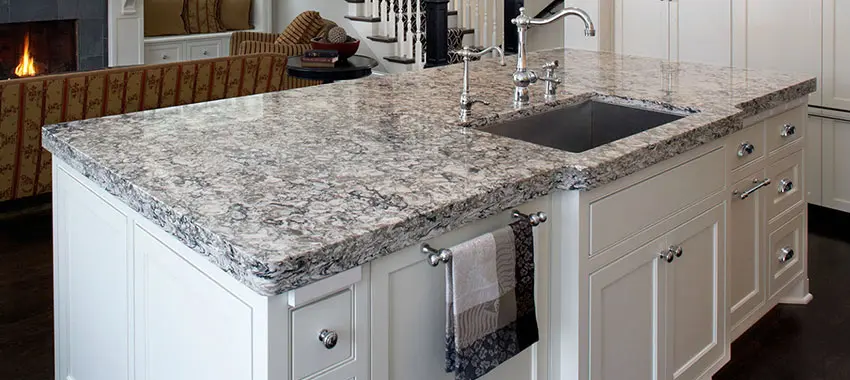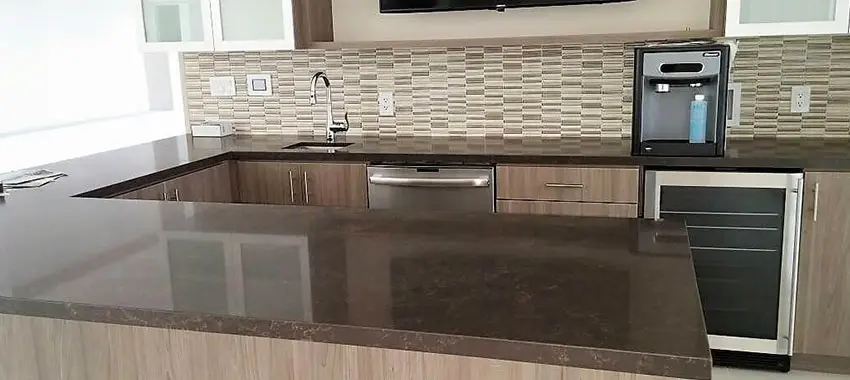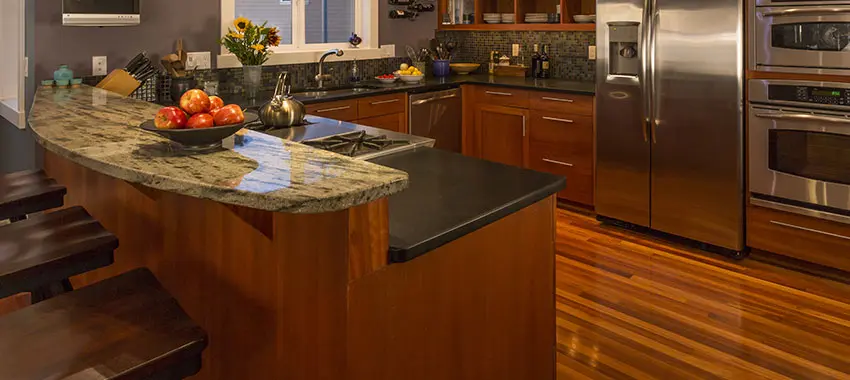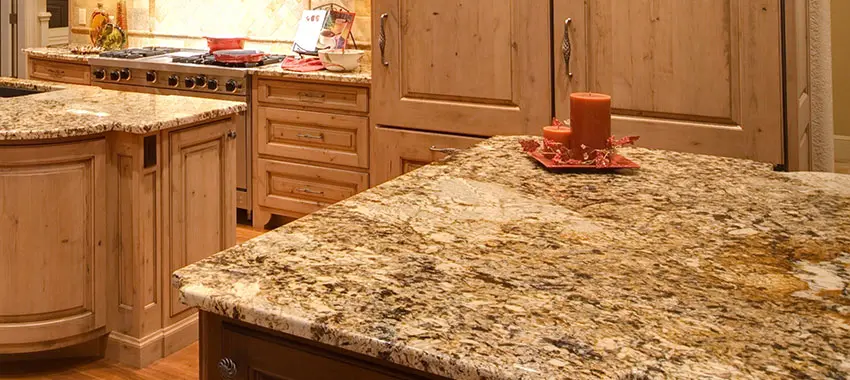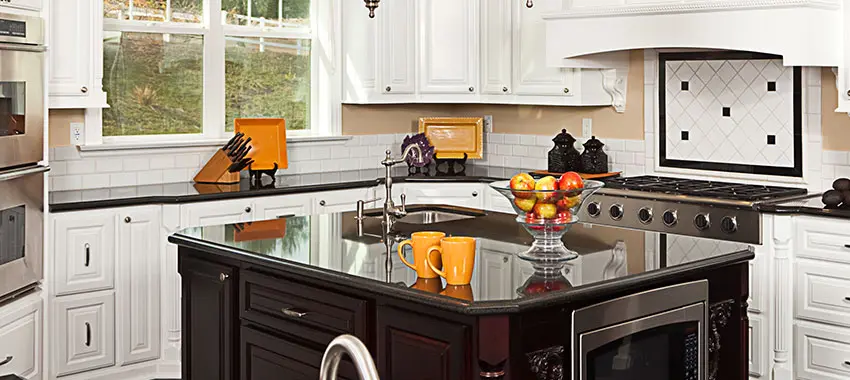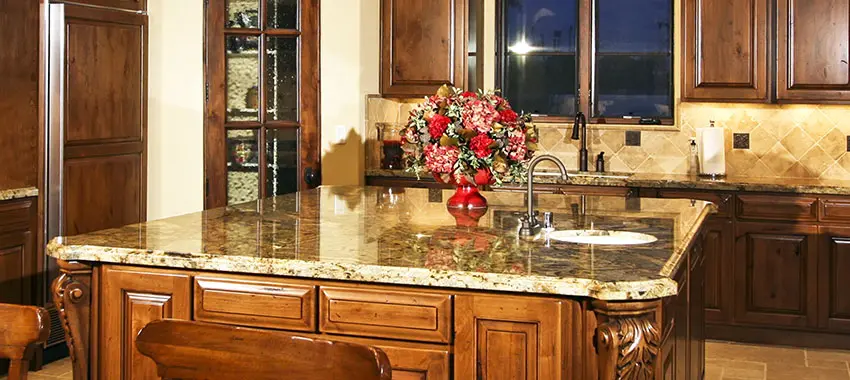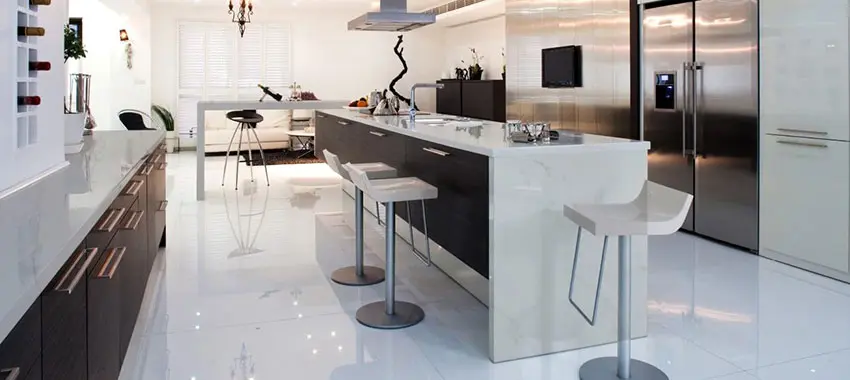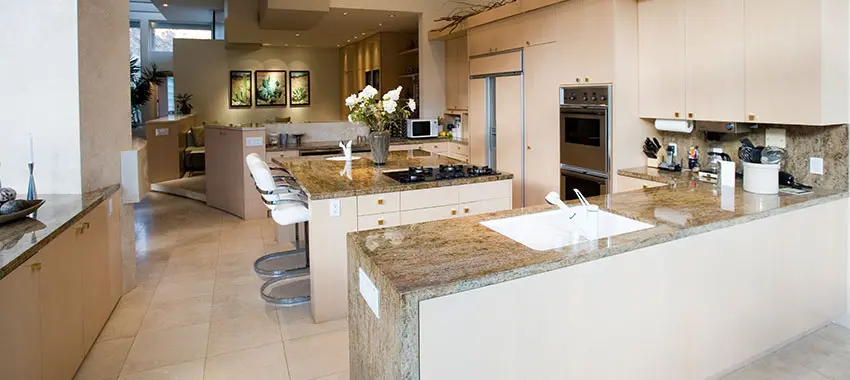Feb
What To Know About Mitered Edge Countertops?
- 2025
- FlintStoneTops
If you love countertops and the variety they come in, then you’ll like to take a deep dive into the edge options. There are just so many options. Bevel, bull nose, waterfall, straight, the list goes on. So, if you’re buying quartz or granite countertops and considering metered edges, here is what you should know about this edge option.
Mitered Edging In Kitchen Countertops
When you look at a mitered edge, it looks like a rotated L-shaped countertop edge. It is an edge that is flush against the countertop and the edge makes a 90-degree angle with the countertop. This is done by fusing a part of the edge with the countertop at a 45-degree angle. The parts are glued together using a high-grade adhesive or epoxy filler.
Mitered edges are really beautiful and they look like an edgier waterfall. This edge is all sharp sides and minimal looks, but still manages to steal your heart. So, if you’re looking for something different then this edge is worth a try.
A lot of edges can be really simple and even though this edge looks simple too, it’s anything but. If anything, there is a lot more work involved in making this edge a perfect L-shape. Mitered edges also drape over the countertops, which is a sweet and simple look and it elongates the countertops in the best way.
So, if you like these sorts of designs, then mitered edges will be a favorite in your book. They are unique and they’re a class apart when it comes to countertop edges.
Features Of Mitered Edge Countertops
We have explained what mitered edges are and what they look like, so now is the time to discuss some key features of this very edge. Some of them can be good while some others, not so much, but at least you’ll know how to make the right decision when it comes to choosing a countertop edge.
They Are Amazing To Look At
Mitered edges have that very unique look. They appear very luxurious and amazing. They’re the kind of edges that you want to look at every single day. The shape and the design – everything is awesome and you can’t help but admire this edge design.
They Can Be Pricey
While mitered edges are beautiful and one-of-a-kind, they can also be expensive to build. As it’s like an L-shape, there is going to be an attachment of two strips of stones at a 45-degree angle and the result will be a 90-degree L-shaped edge that will look amazing.
But, to build this edge, precision is key. You don’t want the stone to look crooked or weird in any way, which is why you need to ensure that they’re built properly. That’s why specific machines are used that do all the work. However, for precision, the machines have diamond blades or tips. Because of this and other reasons, this edging option costs more than others.
The Cost Also Depends On The Stone You Choose
We mentioned that mitered edges are costlier than other edging options. However, the final cost also depends heavily on the stone you pick. This type of edging can go with almost any stone, but each stone has its own price range. Some are affordable, some are medium-range, and others are premium and costly.
If you want to choose popular options, then look for granite and quartz. You can find mid-range and premium granite and quartz slabs.
Available In All Stones
Be it natural stones, man-made stones, or even sheets or veneers of materials like laminate, mitered edges can be made with any and every countertop material. As long as the stone is easily cut and can be glued back together, then everything is perfect.
When making a mitered edge, the main thing you want to remember is how the stones will glue back together. The veining and the design of the stone should be flush with the top of the edge. This will make for a sleek edge and you will love the look of it in the end.
They Are Unique
Mitered countertop edges – even though they’re really simple – are very unique. They are made by fusing two parts of the stone and they just look easy to the eyes and beautiful.
So, if you want something unique and different from other edges like straight or bullnose edges, then definitely go for a mitered edge. It’s not complicated, it won’t make your countertops look weird, and it’s just overall an amazing option.
They Are Heavy
Since mitered countertop edges are an inversed L-shape, the stem of the L will droop downwards. Even looking at the shape, you know that the stem is longer, so it will weigh a lot too. Whereas the base of the L-shape is lighter and narrower, so it will be flush on the countertop. This shape makes it inconvenient for installation and it’s something that you have to keep in mind.
The bottom of the edge is very heavy and you can tell that they’re hard to move around. So, installation will be hard and there’s also a huge chance of the slabs breaking because they’re too heavy to deal with if not handled by an expert.
They Are Not The Safest
Mitered edges, even though they are L-shaped, are not exactly the safest when it comes to edges. They’re not only sharp around the edges but things can get caught in the stem of the L-shaped edge.
This is bad because the height of countertops is the same as any toddler and they can hit their head pretty hard if they’re not looking where they’re going. The sharp edge doesn’t do anything to quell the fears either. A lot of edges are rounded for safety but mitered edges are sharp through and through.
Thicker Appearance
A unique feature of mitered edging is that it can make your countertop appear thicker than it is. This is great because thicker countertops look more attractive and beautiful. This happens because two parts of the same stone are attached together at a 45-degree angle and the result is a thicker looking countertop.
Seamless
We have already stated how amazing mitered edges they are. One of the reasons is that they are seamless to the naked eye or at least to most people. Even though the edge is crafted with glueing two parts of the same stone together, you won’t notice seams unless you pay very close attention or use a magnifying glass.
Easy To Clean
Mitered edging is one of the easiest to clean as it’s similar to straight edging. If you know about edging options, you may know that some are beautiful but have curves and sort of layers that are hard to clean. So, if you like your countertop cleaning process to be simple and quick, you will like mitered edges. There is complication involved in cleaning and yet they look luxurious and amazing.
Conclusion
Mitered edges are a very good option when it comes to countertop edges. They are very similar to straight edges, but still a bit different. For getting any kitchen countertop with mitered edges or any other edge style, consult granite contractors Potomac.


